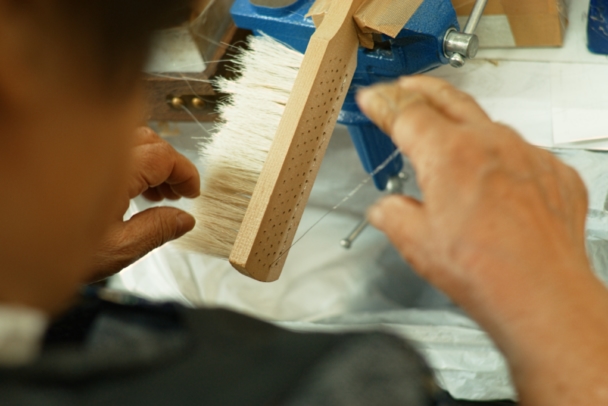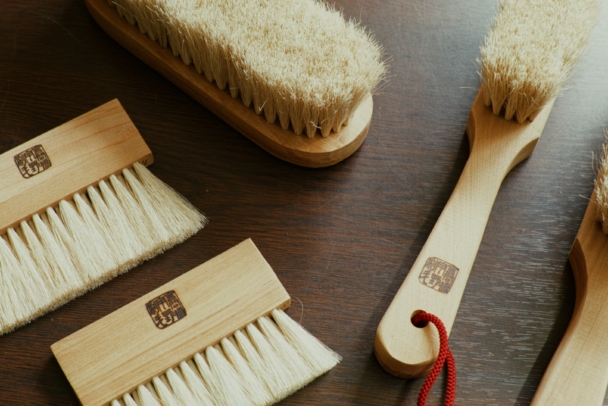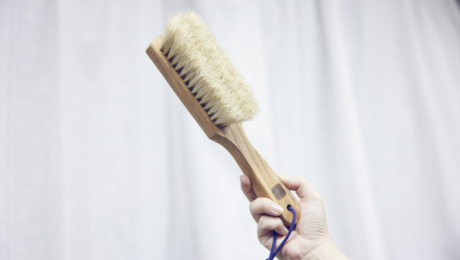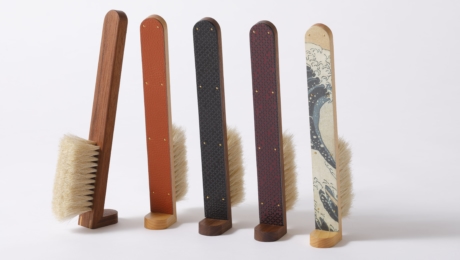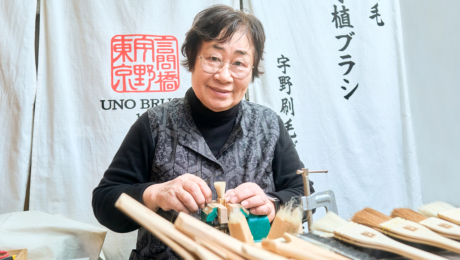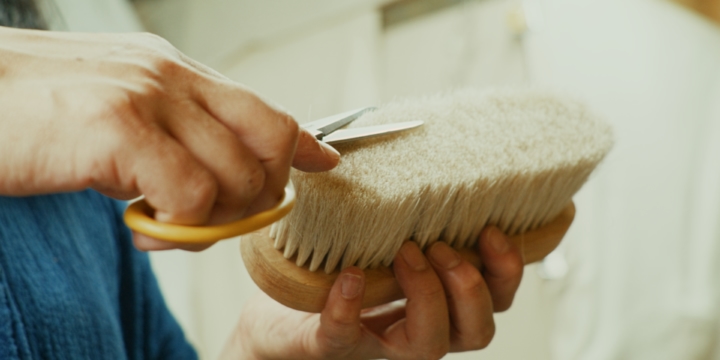

The comfort of hand-planted brushes for clothing and body
Brushes (Hake) are used mainly for painting, and brushes are also a tool for brushing. Both have a lot of hair attached to the tip of the handle, but while brushes have been used in Japan for a very long time, the brush was said to have started in the Meiji period based on a model made in France. As people’s lives become more westernized, the demand for clothing and shoe brushes is also increasing. While brushes are increasingly mass produced, there are still highly durable hand-planted brushes made by craftsmen in Tokyo, continuing the traditional craft of the “Tokyo hand-planted brush.” Founded in 1917, Uno Brush is a business that still uses the brush-making techniques from its founding to produce hand-planted brushes.
The third-generation mother and child craftsman team of Chieko and Michiyo Uno continue to preserve these traditional techniques. Brush-making begins with consideration of the quality of the natural bristles. The oil content, stiffness and softness differ depending on the animal, and different hairs are used for different purposes with soft goat hair perfect for face brushes, soft but firm horse hair for clothes brushes, and boar hair used for hair brushes, with its firmness effective for massaging the scalp. The hand planting process involves first, drilling a hole into the wooden base, then inserting stainless steel wire into the holes, folding them in half, and then pulling the hair through to plant it into the hole. This is a particularly labor-intensive practice which requires strength to pull the hard boar hair. One of the reasons these body brushes have been loved for so long is the attention to detail, with all of the corners of the wooden parts removed to make them smooth.
In recent years, a wide range of products have been actively developed with playfulness as interior design items, such as collaborations with designers to produce brushes with animal motifs and Edo Kumiko handles, etc. In the future, more colors and patterns are planned to be added to meet overseas demand. The mission of this Uno mother and child team is to constantly evolve while preserving the principle of working by hand.
